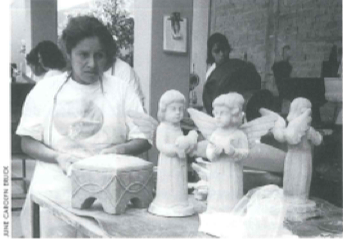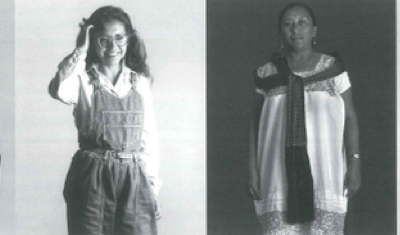Tec de Monterrey
Thirty years ago, when Rafael Garza’s father studied at Mexico’s Instituto Tecnológico y de Estudios Superiores de Monterrey, all courses were taken in a traditional classroom setting and papers were written in solitude. Today, Rafael is a student at the Tec, and his experience is far different from that of his father. Information technology is an integral part of his courses, enabling team teaching and collaborative work unheard of a generation ago. Through the technological innovations implemented at the Tec, Rafael is able to work with professors from all over the world, establish collaborative teams with students from many other countries, and hear through videoconference systems the opinions of those participating in his classes via distance learning.
The Tec de Monterrey System
Clearly, information technology has enabled fundamental changes to occur in the teaching/learning process. Over the last two decades, Tec de Monterrey has made a remarkable transition from a faculty-centered to a student-centered environment supported by electronic communications. The Tec’s new mission is two-fold: to conduct research and outreach relevant to Mexico’s sustainable development and to educate students to be individuals who are committed to the social, economic, and political development of their communities and are internationally competitive in their professional fields. Tec de Monterrey’s academic activities are designed to develop honest and responsible leaders, entrepreneurs, and innovators guided by a spirit of personal development.
Tec de Monterrey is a vast system, with 6,200 faculty members and nearly 80,000 students based at 30 campuses in Mexico and nine centers in other Latin American countries. To help ensure quality and consistency across the system, networks of faculty members working in the same discipline collaborate in the design of curricula and the improvement of teaching methods. Quality is also maintained through an online evaluation system that uses a variety of indicators to assess faculty participation in program development, student scores on standardized comprehensive exams, and student opinions on faculty, administrators, library and information services, and quality of the infrastructure, among other concerns.
Technology is also used to facilitate interaction among students and faculty. The Tec has 21,303 computers, of which 17,934 are for student use’a ratio of four students per computer. A continuously increasing number of Tec de Monterrey courses involve web-based home pages and online homework and course materials. The various campuses are linked by a private communications network with both Internet and satellite connections.
The Tec de Monterrey system includes the Virtual University, which provides classes especially in core curriculum, postgraduate studies, and continuing education to institutions in Mexico and in Central and South America via video, satellite, CD-ROM, and the Internet. When developing distance learning courses and programs, Tec de Monterrey faculty and administrators have paid careful attention to the traditional education process, to the ways in which technology can enhance that process, and to the importance of applying to distance education the same theories of collaboration and student-centered learning that guide other aspects of the Tec.
One recent example of these theories and innovations at work was the Financial Leadership Program in Higher Education, a seminar offered jointly by the Virtual University of the Tec, Harvard Graduate School of Education , and LASPAU: Academic and Professional Programs for the Americas (a Harvard affiliate). The seminar, which took place from March 10-June 30, was designed to train Latin American and Caribbean university administrators in strategic financial planning, fundraising, financial administration in planning and cost control, and financial information system management. It combined both distance learning and traditional classroom instruction, and engaged faculty from Tec de Monterrey, Harvard University, and other Mexican and U.S. universities.
Faculty
In the traditional model for education, faculty members teach in classrooms using discussion, visual aids, and books as tools. In the new model, faculty may choose to teach via any one of a host of recently developed media. Decisions can be made as to which format to use, how to present the information in the chosen format, and whether to personally design the presentation.
When developing course content, Tec de Monterrey faculty members are assisted by instructional designers or trained in the new models. Regardless of which learning medium is used, faculty members benefit from professionals who help prepare the materials: video production teams, graphic designers specializing in print or virtual materials, individuals trained in the development of CDs and other media.
Students
While traditional classroom learning requires the presence of students and faculty at a particular time and place, courses incorporating online materials, web-based assignments, and other technological innovations encourage students to make their own decisions as to when to study and whether to work alone or with others. To succeed in the new learning model, students must possess technological skills and the self-discipline and motivation needed to respond to the constant and varied challenges the process presents.
Course Content
Technology does not replace thoughtful course preparation. Whether presented electronically or in a classroom, a successful course facilitates the acquisition of knowledge while developing skills and encouraging diverse perspectives. Tec de Monterrey faculty members are required to clearly define the contents, objectives, methodology, and presentation format for each course all of which are detailed in materials distributed during the course selection process so that students can plan their programs of study with a thorough understanding of what they are going to be taught and what they are expected to achieve.
Evaluation
Evaluation systems are critical to successful teaching and learning. At Tec de Monterrey, computer software designers work with faculty members to produce web-based programs that enable students in each course to provide feedback on their own performance as well as that of fellow members of group projects. The system provides faculty members with a more comprehensive view of group and individual efforts than they might otherwise be able to obtain. The evaluation software includes the capability to compile results in order to provide the professor with data for determining both individual grades and grades for group projects.
As with traditional classroom courses, distance learning programs assess knowledge acquisition through exams and through homework assignments and papers submitted to professors. However, with potentially large and physically separated groups of students, it is difficult for faculty to supervise every assignment or to track the development of student skills and attitudes. The evaluation software is thus also valuable in ascertaining the methods students use to complete assignments and the perspectives they have acquired through a course. Along with helping faculty members to more accurately evaluate students, the process of defining issues and achievements encourages students to be thoughtful about their efforts.
Program Enrichment
Students now enjoy a wide array of resources available to enrich course content. They may be asked not only to consult books or periodicals in a library but also to look on the Internet for additional references. In addition, students may be expected to share such information with classmates or faculty. In traditional education, this exchange of knowledge would only happen during the scheduled class time. In the new model using email, distribution lists, or other electronic means this information can be shared at any time within a timetable that is considered appropriate by the professor and teaching assistant.
Collaboration
Working cooperatively is a demand of globalization. Students no longer depend exclusively on their professors but also increasingly on their classmates and on their own resources and capabilities. They must learn to collaborate with people from other countries, which means familiarizing themselves with other ideologies, other work systems, and even other languages.
When Tec de Monterrey began investing in distance education ten years ago, it trained specialists in education, computing, and communication, among others. More than 200 people now support the faculty who are preparing distance learning installations throughout the continent. These staff members produce academic programs, schedules, course content, videos, CD-ROM and satellite sessions, interactive software, and printed and web-based materials for students.
In establishing the distance learning program, Tec de Monterrey administrators made it clear that no single individual’s work would be enough. They were expected to collaborate with precision, rhythm, and harmony in order to develop courses for people throughout Latin America. Thanks to information technology, the distance between people has lessened not only physically, but also culturally and socioeconomically. Tec de Monterrey students across the hemisphere may have diverse languages, economic conditions, and resources, but they are able to work together toward the common goal of developing their countries to be prepared for the new century.
Pullquote: The Financial Leadership Program in Higher Education, a seminar offered jointly by the Virtual University of the Tec, Harvard Graduate School of Education, and LASPAU, was one recent example of these theories and innovations at work.
Fall 2001, Volume I, Number 1
María Teresa Martínez, a Tec de Monterrey representative, works out of LASPAU’s Cambridge offices to develop joint LASPAU/Tec de Monterrey programs and to represent the Tec in the northeast United States. While the LASPAU/Tec collaborations historically have involved more traditional exchanges, many of the programs currently being implemented have a distance-learning component.
LASPAU, a Harvard-affiliated organization that designs and implements academic and professional exchange programs to benefit Latin America and the Caribbean, has collaborated with Tec de Monterrey for more than twenty years.
Related Articles
Editor’s Letter: Mexico in Transition
You are holding in your hands the first issue of ReVista, formerly known as DRCLAS NEWS.
Over the last couple of years, DRCLAS NEWS has examined different Latin American themes in depth.
The View from Los Angeles
In 1999, on returning home to LA after four years at Harvard and in the Boston area,I ascended to the city of Angels for the annual gala dinner of the premier civil rights firm: the Mexican American…
What’s New about the “New” Mexico
On July 2, 2000, Mexican voters brought to an end seven decades of one-party authoritarian rule. Just over a year later, Mexico continues to feel the repercussions of this momentous victory…




